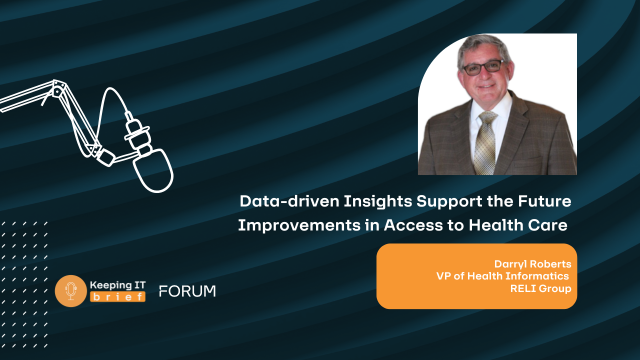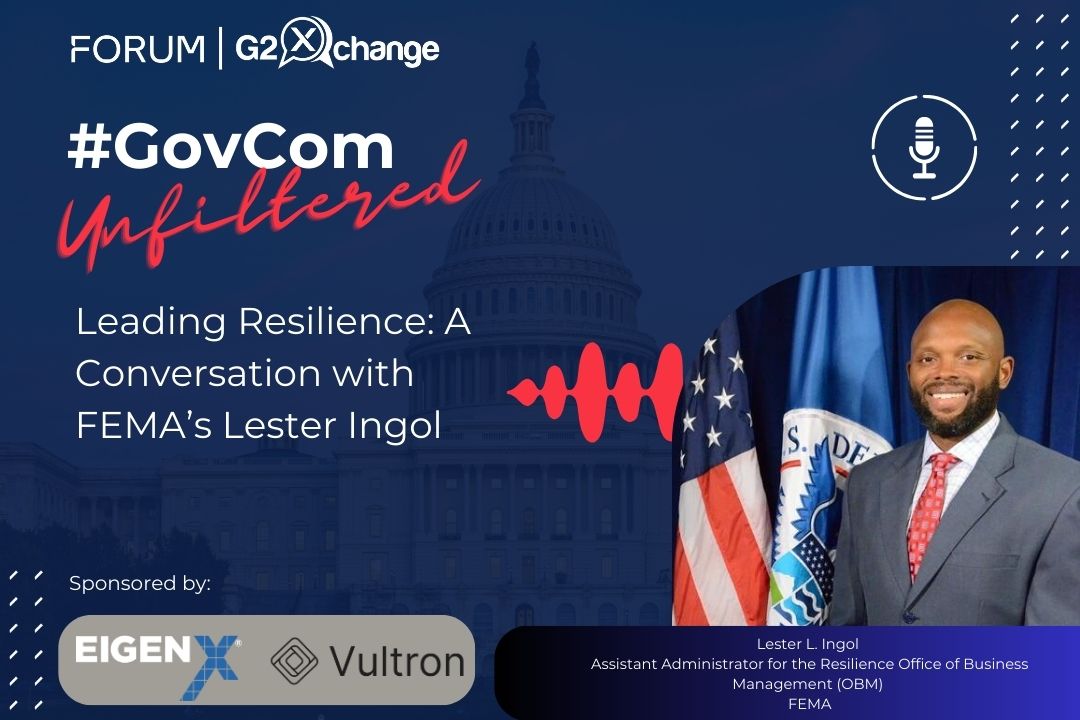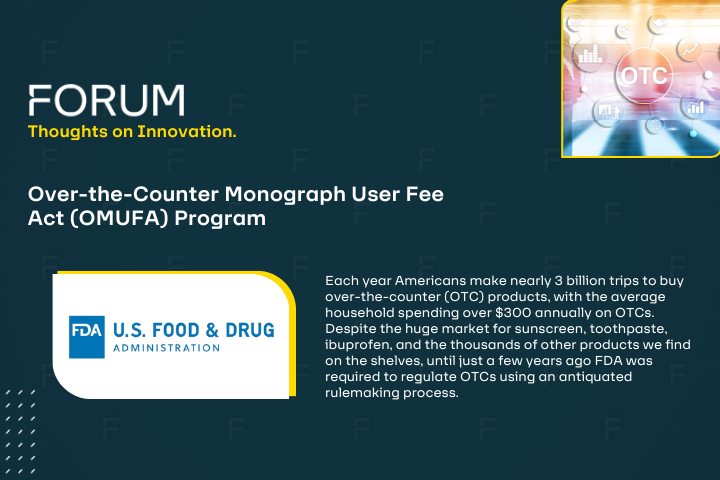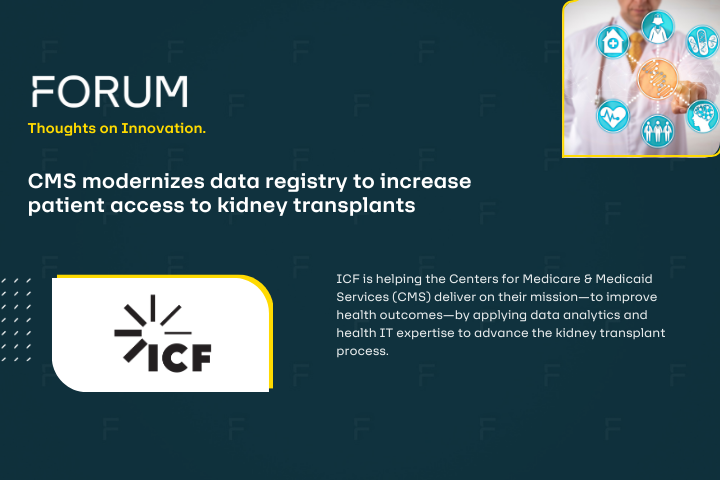This interview with Jason Windsor, Colonel, U.S. Army, (Retired) and Vice President, Health IT with GDIT, discusses the promise and challenge of interoperability, the opportunity for innovation, technology vendor and small business partnerships with large firms such as GDIT, and evolving acquisition policies to support interoperability.
Defining Interoperability
Interoperability is the promise of disparate systems working together – connecting and communicating with each other – for greater data sharing. Having systems work across health agencies provides access to a full picture of a patient’s history, enabling doctors and health providers to provide better care.
Interoperability has been increasingly understood to be fundamental to realizing the promise of seamless health information exchange and that patient care and long-term outcomes hinge on interoperability. It is important for providers, for participants working to improve care, and it is critical for patients.
Today’s journey through any Healthcare system is complex with multiple providers, many hospitals and practices and each interaction generates critical data. The more times we draw attention to the need for interoperability, the more we improve the readiness and willingness of industry and Federal agencies to collaborate to meet the need to reduce costs and improve care through shared standards and goals.
Technology Enables Information Exchange
Historically, interoperability was constrained by a lack in the available technology. Now, we have reached the time when technology has advanced to support collaboration and large-scale sharing of data to enhance cost-effective care.
That large-scale sharing of information has been a roadblock within independent agencies, between care providers in different sectors or in different geographic regions sharing patients. The sharing of information between VA and MHS has always demonstrated a clear connection and the need for a seamless exchange of information across the patient’s lifecycle in the Military and afterwards. Within those spaces, that information exchange evolved so care providers on both sides could see broader sweeps of data and longitudinal data, could access those critical data points that really impacted patient care and care decisions.
That exchange of patient information has more touchpoints than that, however, as patients may be treated by specialities, between various stages and levels of care, and if they receive care within a commercial space or under the oversight of another agency. Access to an HIE that encompasses the entire scope of critical patient data at the point of care and at the time of care is imperative for decision-making.
One example of technology enablement is in artificial intelligence. As discussions continue to grow around the promise of AI and predictive analytics, we have to keep in mind that interoperability is crucial to AI-enabled applications. Clinicians that are using AI and machine learning, that are employing algorithms to make diagnoses and determine treatments, are all relying on interoperability to ensure good decision making.
As the Healthcare industry continues to move toward sector-based value care models, the ability to capture, manage, analyze and share health information will be key to the success of those missions.
The Push and Pull between Industry and Government
Interoperability truly has to be driven from industry and Government, both. If Government is pushing down mandates that industry is not prepared to implement, there will be resistance. When industry pushes with something that Government is not ready for legislatively or from a policy or resource level, there is that same resistance.
Change does not have to come from the top. In fact, it’s been my experience that most innovation comes from industry, from the experts pushing the envelope, because they have a different view of the problem and sometimes see a clearer path.
Realistically, we need to find that happy medium, that place where there is collaboration between Government and industry and where we can meet in the middle to really make change. Within the Healthcare industry, because of the measure we put on health and life and the betterment of society, everyone recognizes this is the right thing to do; it’s about working together to get there.
Changes to Acquisition
To ensure we all are moving in the right direction, Government is leaning more towards mandating interoperable solutions within requirements across contracts. At the same time, we are seeing contracts and the acquisition process go through iterative growth, finding new ways to work with industry collaboratively, seeking different ways to partner with industry, and looking more at a shared risk/reward model which is different from what we saw before.
As we continue forward in these advances within acquisition, we have to ask whether we continue to use the FAR as it was written. Technology has advanced with leaps and bounds, yet the regulatory process remains the same.
Federal contracting officers are seeing they have the ability to influence and mandate some kind of standardization of format, information sharing, data location and accessibility and with it comes the ability to influence industry to lean that way, where it was not already doing so on its own.
Partnering with GDIT
As one of the largest systems integrators to the Federal Government, GDIT is founded in the principles of transparency, trust and service. Whether it is working with the VA, MHS or IHS our success includes relationships with technology vendors and small businesses. Our teams have been preeminent leaders supporting IHS and its push towards EHR modernization, are driving data research and analytics in support of the Defense Health Agency TBI Center of Excellence and recently developed an AI tool being piloted at the VA for skin lesion identification in Veterans.
All these efforts bring to the table the advantage that comes from emerging tech, from that hunger that drives innovation from the bottom. We are very interested in finding companies that align with us in terms of our guiding principles of honesty, transparency and trust, that match our desire to serve and to give back to our Military, our Veterans and tribal communities. That enhanced service attitude that truly allows us to partner with Government, allows small businesses the chance to work, to partner, to prove what they can do, and to grow.
About Jason Windsor
 Jason is an accomplished C-level executive and retired U.S. Army Colonel, experienced as a Commander (CEO and COO), clinical business executive, Healthcare information technology subject matter expert, and career nurse specialist with diverse experience throughout the Department of Defense, Veterans Affairs, Health and Human Services, the White House, and other Federal departments and agencies. He brings adept knowledge in defense acquisition and contracting, program/project management, Healthcare operations, clinical instruction, and leader development; exceptional communication skills and is a proven leader with a keen ability to identify strategic needs as well as implement operational solutions with successful outcomes. Jason possesses board certifications in clinical specialties, Healthcare IT, and project management.
Jason is an accomplished C-level executive and retired U.S. Army Colonel, experienced as a Commander (CEO and COO), clinical business executive, Healthcare information technology subject matter expert, and career nurse specialist with diverse experience throughout the Department of Defense, Veterans Affairs, Health and Human Services, the White House, and other Federal departments and agencies. He brings adept knowledge in defense acquisition and contracting, program/project management, Healthcare operations, clinical instruction, and leader development; exceptional communication skills and is a proven leader with a keen ability to identify strategic needs as well as implement operational solutions with successful outcomes. Jason possesses board certifications in clinical specialties, Healthcare IT, and project management.
About GDIT
GDIT is on the frontlines of health innovation, providing the technology, health systems and science that drive better health. From health IT to research, bioinformatics and public health, GDIT is protecting the health and wellbeing of our nation’s citizens, service members and veterans. See how at gdit.com/health.












